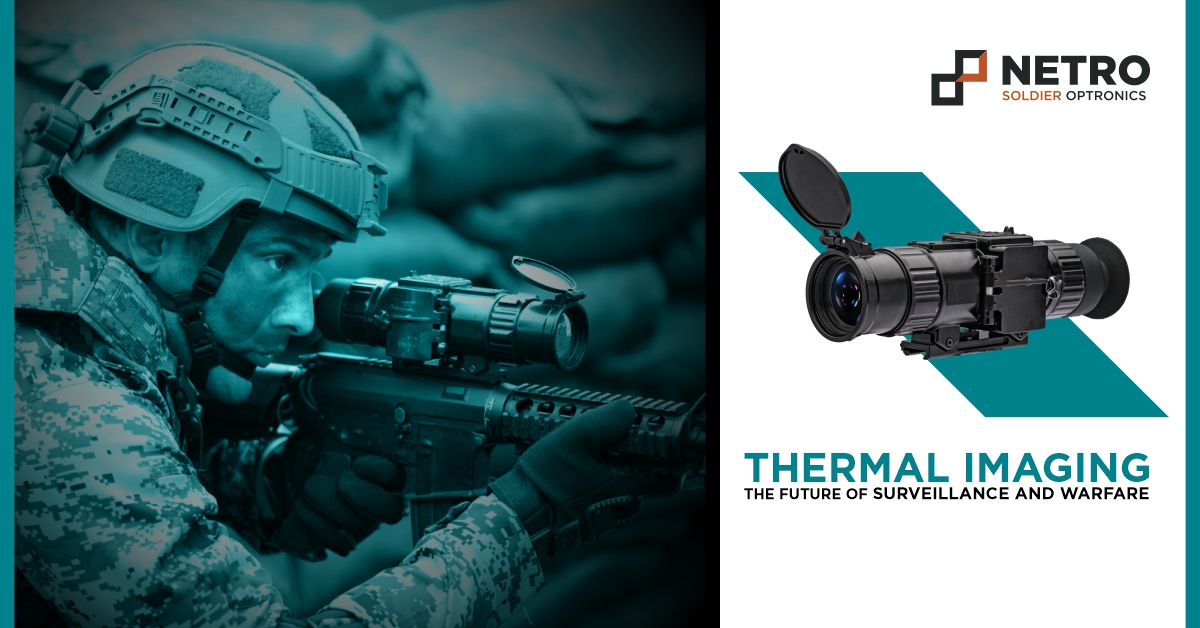Today, conflict situations are hi-tech and wars short, fast-moving and intense. To cope with these diversely asymmetric, multi-dimensional and highly lethal imperatives of the battlefield, global armies are modernizing their military arsenal and getting soldiers geared up with the latest in combat and surveillance technology.
One such advancement is seen in the field of Optronics systems, particularly with Thermal Imaging Devices. A Thermal Imager (also known as a thermal image camera or TIC)is essentially a heat sensor that is capable of detecting minute differences in temperature. The device collects infrared radiation from objects in focus and creates an electronic image based on the acquired information. A thermal imager works somewhat like a human eye. The only difference is, instead of picking up the visible, reflected light, thermal imaging devices detect the heat emitted by an object.
Thermal imaging due to its various advantages has a large number of applications in defense and homeland security operations.
Benefits of Thermal Imaging
* Capable of scanning broad areas through aircraft.
* Can be used as a guidance system to avoid collision at sea.
* Helps identify, locate & target the enemy forces.
THERMAL IMAGER APPLICATIONS IN MILITARY
Vehicle Mounted Sights
In answer to the military’s need for long-range, mounted and rugged thermal imagers on vehicles, multi-sensor thermal-imaging technology has been developed for combat vehicles. These thermal sights aid in rapid identification and threat location for our forces and help in their elimination.
Protection of Military Bases
Military bases and static installations present an attractive target to terrorists as well as enemy forces. Effective perimeter security is essential since such installations house administrative and operational equipment, along with personnel. Early warning thermal imaging systems enable the military to assess the potential threat and act in a timely and effective manner.
Motion Detection
Motion detection is an important element of Automatic Target Recognition (ATR) and perimeter monitoring systems. Thermal imaging has become an integral part of these systems because of its ability to operate in all weather conditions. Generally, for long-range surveillance applications, the images containing the moving target are transmitted to the base station for manual interpretation. In short-range surveillance, moving target identification (MTI) systems intelligently recognize if the moving target is a potential enemy target and transmits this information to a firing system.
QUALITATIVE REQUIREMENTS OF THERMAL WEAPON SIGHTS (TWS)
The military looks for several qualitative requirements in the development of thermal weapon sights. The first consideration is always the battle context and the resultant necessity. These are followed by technical requirements, some of which are discussed below.
Precision
Accuracy is of paramount importance to soldiers on the battlefields on the ground, in the air, or on the sea. For this reason, military forces rely on electro-optical solutions to provide a clear and immediate picture of their expansive surroundings at all times using multiple sensor technologies, together with long-range optics and sensor stabilization.
Image Quality
Image quality is of utmost importance when it comes to Optronics. The use of very high-resolution digital imagery is required in order to view fine details and distinguish friend from foe, and target from decoy.
Size, Weight, Power & Cost
There is a need for handy, lighter direct-view systems, lightweight, robust and power-frugal devices with better performance that are easier to use.
Situational Awareness
Soldiers want more utility from their night vision devices than just being able to see in the dark. They want light-secure situational awareness at increased ranges in a heads-up display in combination with night vision. IR imaging helps find targets and even determine intent. If the object is actually a weapon, it’s also important to know if it’s being carried in a relaxed pose or in an aggressive stance. Exact spotting of targets, intruders and hidden bombs helps protect troops and makes the application of force more discriminating.
Thermal imaging in the optronics product range has become a norm and several innovative products are being developed by the industry through constant sensor research and development so that soldiers can see effectively in a variety of conditions. These devices are a critical part of the military inventory, intelligence-gathering agencies and law enforcement institutions. The future will only necessitate its use in surveillance and warfare, as militaries around the world continue their efforts to maintain a combat edge over their adversaries.


 LOGIN
LOGIN








